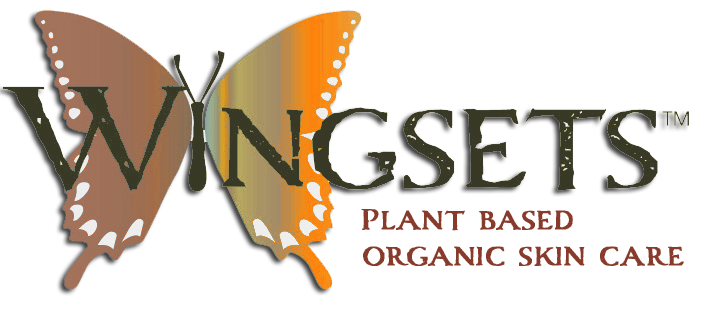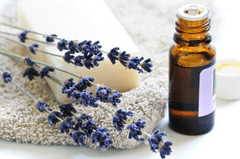Blissful Brain Aromatherapy Blend:
Finding a name for this blend was really difficult for me - I'm not sure why. I think because I felt inadequate at being able to describe the real emotional affect this blend has on me. I'm still not "happy" with the name and any suggestions would be appreciated. I do feel blissful and happy when I diffuse or use this blend, but it's really more than that. Research has shown that the oils in this blend do different things to the brain and, of course, everyone is unique and will experience different emotions. To make this blend simply add it to about 2 ounces of a vegetable or massage oil, your favorite unscented cream or unscented bath salts:
Sweet Orange (Citrus sinensis) – 5 drops
Ylang-ylang (Cananga odorata) – 1 drop
Jasmine sambac (Jasminum sambac) – 1 to 2 drops
Rose (Rosa damascena) – 2 drops
Mandarin (Citrus ritculata) – 2 drops
Sweet orange is well known for it's ability to make people feel happy and there are institutions and organizations - more in other countries than in the USA - who diffuse it into the air to bestow those feelings onto their customers and/or employees. We recommend organic citrus oils due to the potential build up of toxic pesticides in citrus peels.
Ylang-ylang is widely known and accepted in the aromatherapy literature as an aphrodisiac, but it also has some calming properties to it, as does Mandarin due to their ester (chemical constituent) content. These "chemical constituents" in essential oils are natural according to our definition of natural - nothing added to nature.
Jasmine sambac absolute is a well-known anti-depressant with sedative type properties and also well known to be an aphrodisiac. Jasmine must be solvent extracted as an absolute and is quite expensive so be very careful where you purchase this oil, as adulteration is unfortunately common (no, we don't carry it yet- still searching for a good reliable source), The literature also attributes it with the power to diminish negative emotions such as anger. Dr. Amen calls them ANT’s – Automatic Negative Thoughts and they are particularly bad for you and your brain. Jasmine is quite powerful and will overpower the blend if you add too much. We think 1 to 2 drops in this blend will round out the fragrance and the beneficial properties. I absolutely love Jasmine and swoon whenever I open a bottle of it – seriously. Thankfully, a little bit goes a long way.
Rose absolute (solvent extracted) or Rose otto (steam distilled), also very expensive and precious, can have up to 50% citronellol – per Dr. Kurt Schnaubelt,which accounts for its “tonifying” affects. He states, “…the physical and emotional impact of a drop of rose at the right moment can extend far beyond those effects (tonifying effects). This precious oil is one of my most favorites and has the reputation of being a very strong antidepressant.
Mandarin contains an interesting chemical constituent called N-methylanthranilate. This is a natural constituent as all unadulterated essential oils are natural in the truest sense of the word – nothing added. What’s interesting about this constituent is that it is not present in Tangerine oil – so don’t substitute the nice tangy fragrance of Tangerine for Mandarin. Again, according to Dr. Schnaubelt, this constituent called an “ester” has “pronounced relaxing qualities”. This is also a very good oil for children, which is why we include it in our Sleepy Baby Blend.
Let us know if you make this blend. You can, of course, tweak it to your own personal satisfaction and we'd love to hear about that - how you made it, how you used it and if you did, indeed, feel blissful after using it. We recommend using it in a diffuser such as our ultrasonic diffuser, or simply dropping a few drops on a kleenex, or as we mentioned previously - adding it to your unscented bath salts, unscented cream or massage oil.
Thanks for listening!

Find out more about me and Wingsets by clicking Our Story.
Ann has an interesting and varied background in both allopathic and natural health care. She was a Critical Care Registered Nurse for about 11 years. After working in the corporate world for many years, she returned to college to obtain her nursing degree. At the beginning of her hospital career she worked a little over a year in the Operating Room, a couple years on the Orthopedic Floor and a couple years in Short Stay (outpatient surgery), finally deciding that Critical Care was the place she wanted to be until total burn out in combination with foot surgery sidelined her to her real passion - healing and helping people with natural personal care products, nutrition and aromatherapy. Discovering the amazing health benefits of essential oils and natural/organic ingredients moved her into the realm of cosmetic/personal care products formulator. Having a passion for nutrition and natural health, she has also furthered her education in the area of medicinal herbal remedies, became a Certified Clinical Aromatherapy Professional, and has delved enthusiastically into the area of natural health & nutrition, raw food, vegan and vegetarianism. She is a research addict and loves to blog about a wide variety of things she is discovering and hopes her blogs will benefit you and your family.




 Do you love pineapple - I do too. It has so many health benefits and
one that is particularly helpful through the summer allergy season is
that it stimulates the production and release of natural
anti-inflammatory prostaglandins and at the same time is reduces the
production of pro-inflammatory prostaglandins - those that cause
inflammation, sneezing and itching eyes. The body has this wonderful
balance that was put there naturally. The bromelain in pineapples helps
to restore that balance. I love pineapple in my green smoothies, fresh
is best, but canned works too.
Do you love pineapple - I do too. It has so many health benefits and
one that is particularly helpful through the summer allergy season is
that it stimulates the production and release of natural
anti-inflammatory prostaglandins and at the same time is reduces the
production of pro-inflammatory prostaglandins - those that cause
inflammation, sneezing and itching eyes. The body has this wonderful
balance that was put there naturally. The bromelain in pineapples helps
to restore that balance. I love pineapple in my green smoothies, fresh
is best, but canned works too.






 The picture I've added here, I'm sure is doing the same for you, but I really have to limit my intake of this delight. So this product, Protein Freeze, sounded good, although we're trying to reduce our intake of animal protein in general. The next thing I ALWAYS do is look at the ingredients - and this is where I just got frustrated and angry that a doctor of medicine, who knows better and who purports to be a health advocate would recommend a product with the following two ingredients:
The picture I've added here, I'm sure is doing the same for you, but I really have to limit my intake of this delight. So this product, Protein Freeze, sounded good, although we're trying to reduce our intake of animal protein in general. The next thing I ALWAYS do is look at the ingredients - and this is where I just got frustrated and angry that a doctor of medicine, who knows better and who purports to be a health advocate would recommend a product with the following two ingredients:












